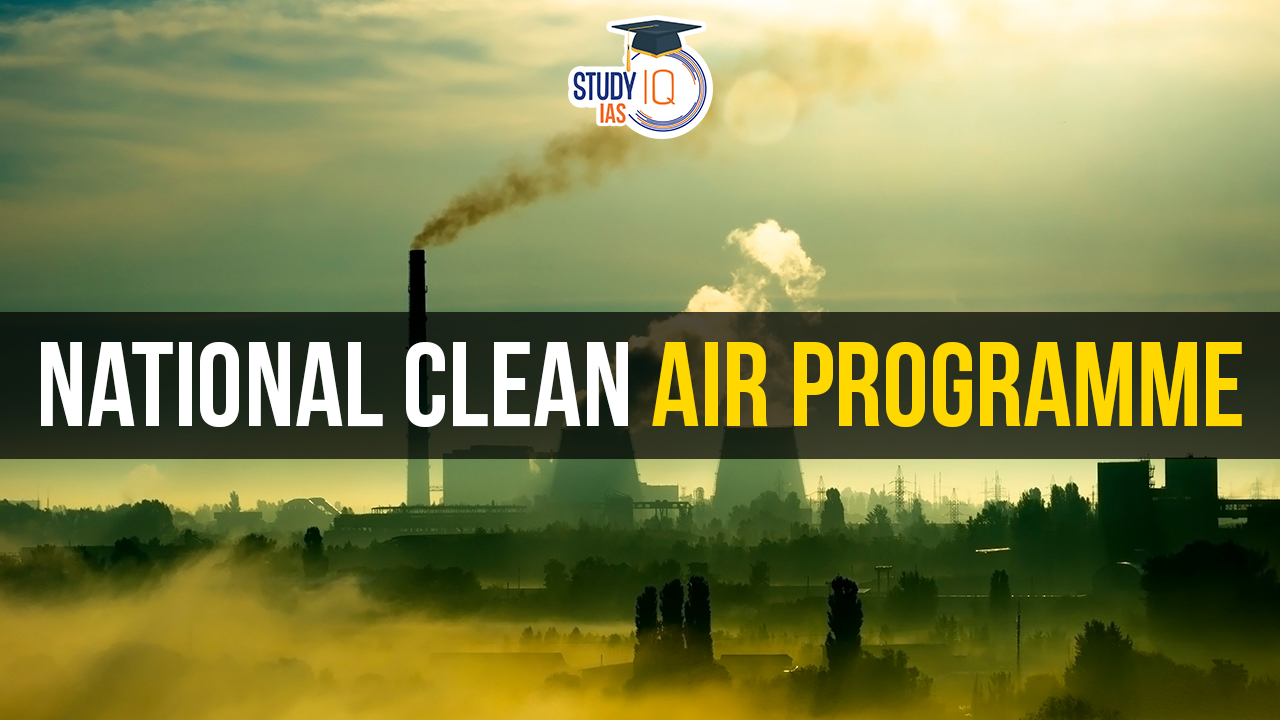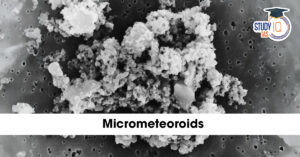Table of Contents
Context: The National Clean Air Programme (NCAP) launched by the Indian government aimed to reduce the concentration of particulate matter (PM) in the air by 20-30% reduction by 2024 from 2017 levels, but this target was later revised to 40% by 2026.
About National Clean Air Programme
- Launched: in 2019 by the Ministry of Forest Ministry of Environment, Forest and Climate Change
- This initiative targets the reduction of PM10 levels by implementing diverse measures.
Key Features of NCAP
- Ambitious Targets: Reduce Particulate Matter (PM10 & PM2.5) concentration by 20-30% by 2024 (base year 2017), revised to 40% by 2026.
- City-Centric Approach: Focus on 122 identified non-attainment cities with poor air quality (based on 2014-2018 data). Each city develops a specific action plan.
- Multi-Level Collaboration: Encourages cooperation between central ministries, state governments, and local bodies for a unified effort.
- Policy Synergy: Integrates well with existing policies like the National Action Plan on Climate Change (NAPCC) for a holistic approach.
- Adaptability: Evolves based on new scientific and technical information to ensure effectiveness.
- Enhanced Monitoring: Increases the number of air quality monitoring stations, including rural areas, for better data collection and analysis.
- Public Engagement: Prioritises public awareness campaigns, training programs, and research & development to empower stakeholders.
Challenges Associated with NCAP
- Funding Utilisation: The Ministry of Environment, Forest, and Climate Change has allocated ₹10,422.73 crore to support these efforts.
- Despite most cities submitting their Clean Air Action Plans (CAAPs), the execution has been uneven.
- On average, cities have used only 60% of the allocated funds.
- Visakhapatnam and Bengaluru notably spent 0% and 1% of their funds, respectively.
- Implementation Issues: Delays in approvals from authorities, the lack of standard operating procedures, bureaucratic hurdles, and scepticism about the effectiveness of certain measures such as smog towers.
| Scientific Tools for Effective NCAP Implementation |
Emissions Inventory (EI):
Source Apportionment (SA) Studies:
Air Quality (AQ) Modelling:
Combining EI, SA, and AQ Modelling:
|
- Limited Data and Modelling:
- Only 37% of cities completed Emissions Inventory (EI) and Source Apportionment (SA) studies.
- NCAP relies on concentration data, not accounting for pollution sources outside city limits.
- Many existing measures focus only on primary PM emissions, neglecting secondary precursors.
- Lack of Air Quality (AQ) forecasting infrastructure in most cities.
- Major cities far behind targets: Most Indian cities are unlikely to meet the revised 40% air pollution reduction target by 2026, falling short of the initial 2024 benchmark.
- Pollution widespread: Non-attainment cities, peri-urban areas, and even villages are experiencing significant air pollution.
- Air quality exceeding limits: PM2.5 and PM10 levels surpass the National Ambient Air Quality Standards (NAAQS) in most cities.
- Only 7 out of 93 cities (less than 10%) met the PM10 standard (60 µg/m3) in 2023.
- 32 cities achieved the PM2.5 standard (40 µg/m3).
- Deteriorating PM10 levels:
- PM10 levels worsened in 22 out of 46 monitored cities over the past five years.
- Only 8 cities achieved the initial 20-30% pollution reduction target.
- Durgapur (West Bengal) is the worst performer, with PM10 levels surging over 53% (from 77.2 µg/m3 in 2019 to 118.2 µg/m3 in 2023).
- Four Maharashtra cities (Thane, Mumbai, Navi Mumbai, Aurangabad) also show significant worsening.
- 5 improvements and setbacks:
- Varanasi (Uttar Pradesh) shows the most significant improvement, with a 63% reduction in PM2.5 concentration since 2019.
- Talcher (Odisha) follows closely.
- Conversely, Navi Mumbai (Maharashtra) witnessed the worst PM2.5 deterioration (47% increase). Ujjain (Madhya Pradesh) is a close second.
- Mumbai’s struggles: As a metropolis, Mumbai performed the worst, with its PM10 level increasing by 37% in the last five years.
Recommendations For Success
- Utilise shared, standardized technical evaluations to reduce red tape.
- Prior budgeting and time management for performance-based funding.
- Technical feasibility, budgeting, and time estimates in initial plans.
- A multifaceted approach combining science, strategic funds, and swift implementation.
- More stringent actions are needed to control dust emissions, minimise biomass burning, and restrict solid fuel and waste burning. This will help reduce particulate matter, especially PM2.5.
| Related information |
|


 Micrometeoroids: Tiny Space Particles, M...
Micrometeoroids: Tiny Space Particles, M...
 India Needs a National Insolvency Tribun...
India Needs a National Insolvency Tribun...
 Unlocking the Potential of India–Afric...
Unlocking the Potential of India–Afric...

























